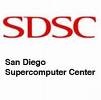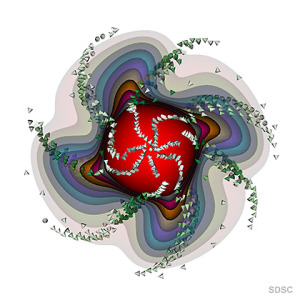 Researchers at the San Diego Supercomputer Center (SDSC) at the University of California, San Diego have received a three-year, $1.3 million award from the National Science Foundation (NSF) to develop a web-based resource that lets scientists seamlessly share and access preliminary results and transient data from research on a variety of platforms, including mobile devices.
Researchers at the San Diego Supercomputer Center (SDSC) at the University of California, San Diego have received a three-year, $1.3 million award from the National Science Foundation (NSF) to develop a web-based resource that lets scientists seamlessly share and access preliminary results and transient data from research on a variety of platforms, including mobile devices.
Called SeedMe – short for ‘Swiftly Encode, Explore and Disseminate My Experiments’ – the new award is from the NSF’s Data Infrastructure Building Blocks (DIBBs) program, part of the foundation’s Cyberinfrastructure Framework for 21st Century Science and Engineering (CIF21). The DIBBs program encourages development of robust and shared data-centric cyberinfrastructure capabilities to promote interdisciplinary and collaborative research. A summary and list of the 2014 DIBBs awards can be found on the NSF website.
SeedMe provides an essential yet missing component in current high-performance computing as well as cloud computing infrastructures,” said SDSC Director Michael Norman. “We view this as an important building block project because computational simulations have become an indispensable tool across a very diverse array of science and engineering investigations and having most access to latest results is extremely important for diagnosis, validation and swift iteration of preliminary results saving researchers their precious time as well as allowing them to utilize computational resources efficiently by catching errors sooner.”

This image and related research data, one of numerous projects being shared and stored using SeedMe, shows a simple model of geodynamo used for benchmark codes.
The newly funded “Ubiquitous Access to Transient Data and Preliminary Results via the SeedMe Platform” project will begin October 1. It will build on the foundation made possible by an $810,000 NSF grant awarded under a separate program in late 2012 to develop a web-based architecture that focused on sharing and accessing visualization related outputs.
The current SeedMe project highlighted the need for additional capabilities and several feature requests from our current users,” said Amit Chourasia, a senior visualization scientist at SDSC and principal investigator for the project. “We will use the lessons learned from the current SeedMe project and extend it to make it more general and applicable to a broader research areas and researchers, while allowing SeedMe to be developed as a modular web‑based, feature-rich cyberinfrastructure.”
Current methods for sharing and assessing transient data and preliminary results are cumbersome, labor intensive, and largely unsupported by useful tools and procedures, according to the SDSC researchers.
Each research team is forced to create their own scripts and ad hoc procedures to push data from system to system, and user to user,” said Chourasia. “These efforts often rely on email and other means, despite the ubiquity of much more flexible dynamic web-based technologies and the impressive display and interaction abilities of today’s mobile devices. SeedMe’s goal is to convert a slow, manual, serial, error prone, repetitive, and redundant sharing and assessment process into a streamlined automatable process that could be easily integrated into existing scientific applications and procedures.”
SeedMe’s building blocks will be broadly applicable to a diverse set of scientific and engineering communities. “In addition, the SeedMe platform will be open sourced so that it can be replicated and extended by a wide range of users, from students to professional researchers,” said Chourasia. “The central SeedMe website will be a common resource for sharing transient data and preliminary results that will enable significant time saving for researchers by providing a simple and ready to use cyberinfrastructure for collaboration. The website will serve as an open web accessible and searchable archive of results and reusable content, making it also suitable for educational and outreach programs for scientific and wider audiences.”
The NSF DIBBs award also calls for SeedMe to organize and conduct tutorials, webinars, and other presentations to promote the resource and train new users. Internships will be provided to high school and undergraduate students so they can learn more about new web technologies and a diverse range of research opportunities.
As part of the current award, SeedMe is now inviting researchers from industry and academia, and across numerous domains, to familiarize themselves with the resources easy-to-use functionality for sharing science results with their peers or the public at large.
This new award will allows us to not only continue but accelerate those efforts to demonstrate how SeedMe enables convenient sharing and streaming of data-intensive scientific research, especially within research teams,” said Chourasia.
Sign up for our insideHPC Newsletter.



